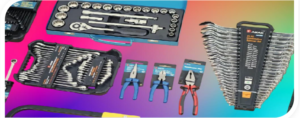Introduction
When it comes to heavy vehicles like trucks, buses, and trailers, the suspension system plays a vital role in ensuring stability, safety, and comfort. Among all suspension components, the leaf spring is one of the most crucial. It bears the load, absorbs road shocks, and maintains tire contact with the road surface — directly affecting the vehicle’s performance and longevity.
Choosing the right leaf spring for trucks or any commercial vehicle isn’t just about finding a part that fits. It’s about selecting a component designed for the specific load, road conditions, and operational demands your vehicle faces daily. In this article, we’ll guide you through everything you need to know to make the right choice.
What Is a Leaf Spring and How Does It Work?
A leaf spring is a mechanical suspension component made up of several layers (or leaves) of steel, stacked in a semi-elliptical shape. These leaves flex and absorb shocks when a vehicle moves over uneven surfaces, helping maintain balance and ride comfort.
In trucks and trailers, leaf springs are often used in the rear suspension to support heavy loads. For buses, they help provide passenger comfort while ensuring stability even on rough roads.
Key Functions of Leaf Springs:
- Load Distribution: Evenly spreads the weight across the axle.
- Shock Absorption: Reduces road vibration and impact.
- Ride Stability: Maintains tire alignment and ground contact.
- Durability: Provides long-lasting performance under heavy loads.
Read More:- What Are Leaf Springs? A Complete Guide to Types, Materials & Uses
Types of Leaf Springs for Trucks, Buses, and Trailers
Not all leaf springs are created equal. Depending on your vehicle type and application, you can choose from several designs:
Multi-Leaf Springs
These are the traditional type with multiple steel leaves stacked together. They are highly durable and ideal for heavy-duty trucks and trailers carrying large payloads.
Advantages:
- Strong and long-lasting
- Better load-carrying capacity
- Easy to maintain and repair
Parabolic Leaf Springs
These have fewer leaves (sometimes just one or two) but are designed with varying thickness for better flexibility and comfort. They’re commonly used in buses and light commercial vehicles.
Advantages:
- Smoother ride quality
- Reduced weight (better fuel efficiency)
- Less friction between leaves (less noise and wear)
Composite or Fiberglass Leaf Springs
Made from advanced materials like fiberglass-reinforced plastic (FRP), these are lightweight alternatives to steel springs. They’re gaining popularity in modern vehicles for their corrosion resistance and reduced maintenance.
Advantages:
- Rust-resistant and lightweight
- Improved ride comfort
- Energy-efficient design
Factors to Consider When Selecting a Leaf Spring for Trucks
Selecting the right leaf spring for trucks involves evaluating several important parameters:
Vehicle Type and Application
Every vehicle has a specific design load and suspension requirement.
- Trucks: Prioritize heavy-duty, multi-leaf designs for maximum load support.
- Buses: Opt for parabolic leaf springs that provide smoother ride comfort for passengers.
- Trailers: Choose springs designed for consistent load-carrying performance and durability.
Load Capacity and Gross Vehicle Weight (GVW)
Always match the spring’s load rating to your vehicle’s GVW. Overloading or under-specifying the spring can lead*9632 to premature wear, poor handling, or even safety issues.
Material Quality
High-grade alloy steel or tempered spring steel ensures long-term durability and resistance to fatigue. Modern composite materials may also be suitable for lighter applications.
Dimensions and Fitment
Ensure compatibility with your vehicle’s suspension system — including eye-to-eye length, width, camber, and center bolt position. Incorrect dimensions can cause misalignment or reduced performance.
Driving Conditions
Consider the roads and terrain where your vehicle operates most often.
- Rough terrains: Use heavy-duty multi-leaf springs.
- Smooth highways: Parabolic or composite springs offer better comfort.
Signs You Need to Replace Your Leaf Springs
Even the best leaf springs wear out over time. Regular inspection can help you identify issues before they lead to costly repairs or accidents. Look out for:
- Sagging or uneven vehicle height
- Cracked or broken leaves
- Excessive bouncing or swaying
- Rust or corrosion
- Unusual noises from the suspension
If you notice these symptoms, consult a professional and replace your leaf spring for trucks immediately to maintain safety and performance.
Maintenance Tips to Extend Leaf Spring Life
To get the most from your investment, proper maintenance is essential:
- Regular Cleaning: Remove dirt, mud, and debris to prevent corrosion.
- Lubrication: Use graphite grease between leaves to reduce friction.
- Load Management: Avoid overloading the vehicle.
- Periodic Inspection: Check U-bolts, shackles, and bushings regularly.
- Rust Prevention: Apply anti-corrosion coating in humid or coastal regions.
By following these simple practices, you can extend the lifespan of your leaf springs and maintain vehicle efficiency.
Choosing a Trusted Leaf Spring Manufacturer
When buying a leaf spring for trucks, quality assurance matters just as much as price. Choose a reputable manufacturer that provides:
- OEM-grade material certification
- Custom leaf spring design options
- Rigorous quality testing
- After-sales support and warranty
Trusted brands also provide technical support to ensure correct installation and compatibility with your vehicle’s suspension system.
Conclusion
Selecting the right leaf spring for trucks, buses, and trailers is critical for safety, performance, and long-term cost savings. From understanding your vehicle’s load requirements to choosing the right material and design, every detail counts.
Whether you’re managing a commercial fleet or maintaining a single vehicle, invest in high-quality, properly rated leaf springs — and your suspension system will reward you with years of smooth, stable performance on every journey.
FAQs
- How do I know which leaf spring is suitable for my truck?
To choose the right leaf spring for your truck, check your vehicle’s Gross Vehicle Weight (GVW), axle type, and load requirements. Always match the spring’s capacity with the manufacturer’s specifications. If unsure, consult a suspension specialist or refer to your truck’s manual.
- What is the difference between parabolic and multi-leaf springs?
Parabolic leaf springs have fewer leaves and offer better ride comfort, making them ideal for buses and lighter vehicles. Multi-leaf springs, on the other hand, have multiple steel layers designed for heavy-duty trucks and trailers that carry large payloads.
- How long do leaf springs last on trucks?
On average, a leaf spring for trucks can last between 5 to 10 years, depending on load conditions, road quality, and maintenance. Regular cleaning, lubrication, and avoiding overloading can significantly extend their lifespan.
- Can I replace only one leaf spring, or should I replace both sides?
It’s recommended to replace both leaf springs on the same axle to maintain balance, ride stability, and even suspension performance. Replacing just one side can cause uneven handling and accelerated wear.








